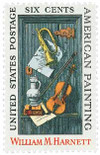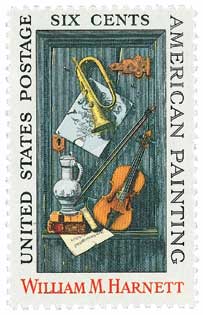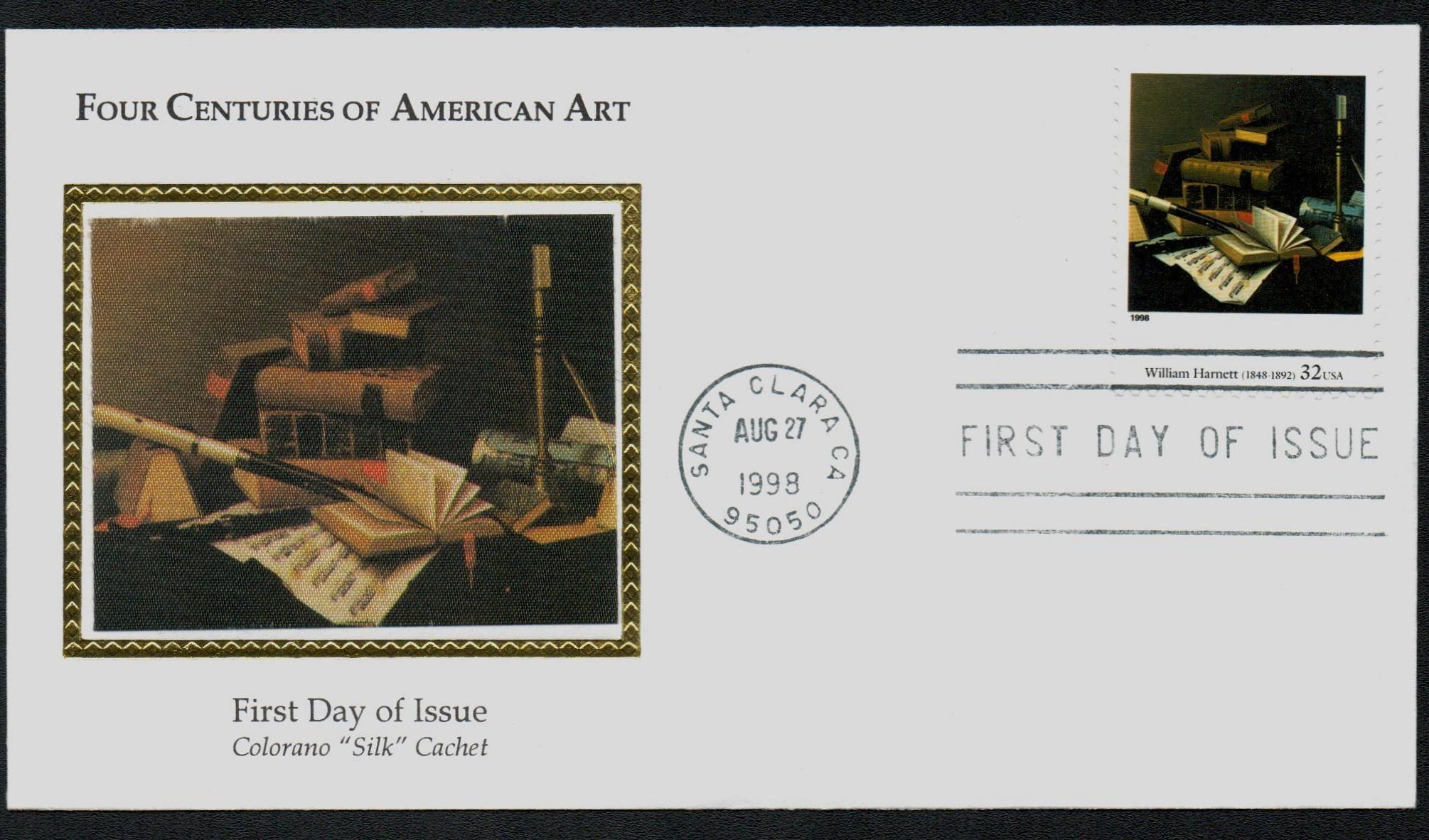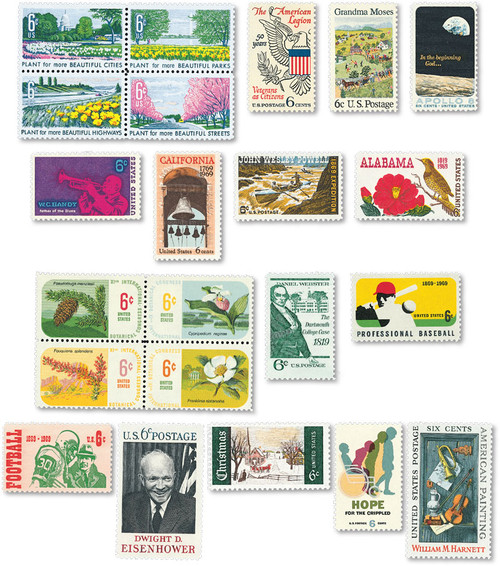
# 1386 - 1969 6c William M. Harnett
Issue Date: December 3, 1969
City: Boston, MA
Quantity: 145,788,800
Printed By: Bureau of Engraving and Printing
Printing Method: Lithographed, engraved
Perforations: 11
Color: Multicolored
This issue honors American artist William M. Harnett, whose paintings are so lifelike he was once charged with counterfeiting.
Birth Of William Harnett
Harnett was born during the potato famine in Ireland and his family moved to America shortly after his birth. His parents, a shoemaker and a seamstress, settled the family in Philadelphia, Pennsylvania.
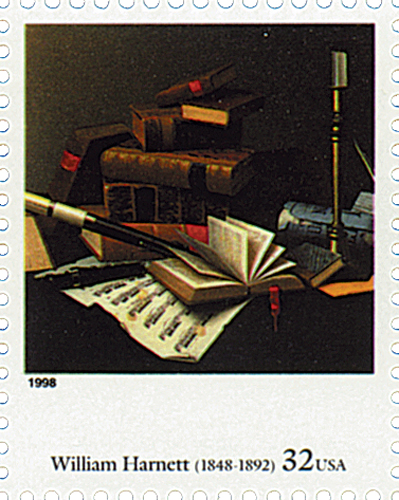
Harnett attended Catholic schools as a boy and sold newspapers and worked as an errand boy to help support the family. As a teenager, Harnett was trained as an engraver. In 1866, he enrolled in night classes at the Pennsylvania Academy of Fine Arts. Harnett then moved to New York in 1869 where he worked in a silver engraving shop while attending The Cooper Union and later the National Academy of Design. During this time he briefly studied under portrait artist Thomas Jensen.
Around 1875, Harnett began producing oil paintings. He started to exhibit his work in New York and Philadelphia. By 1880, he sold enough paintings to go study abroad as was custom for artists. Harnett traveled to London before spending six months in Frankfort, three years in Munich, and a short stay in Paris. While overseas, he frequently sent his paintings back to America for exhibition and sale. Harnett returned to the United States in 1886 and lived in New York City until his death.
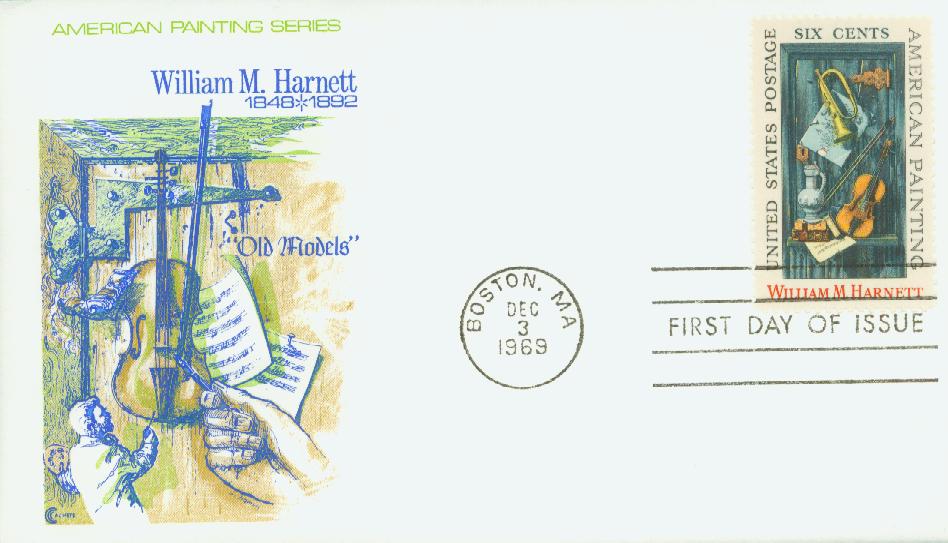
Harnett became known for his “trompe-l’œil still lifes” (French for “fool the eye” – images that were so realistic, they appeared to be in three-dimensions. His realism made him a leading still-life painter of the late 1800s. It was once said that Harnett “copied in oil with the accuracy of a camera.” Some of his favorite subjects were firearms, books, and musical instruments.
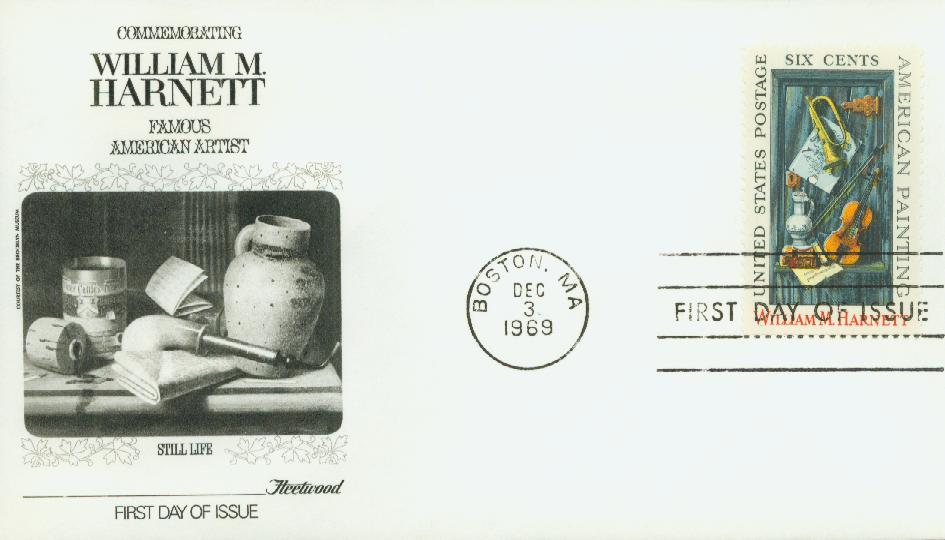
Money was also a favorite subject of Harnett’s. He was able to create a reproduction of a flat, crinkled bill that could easily deceive the eye. So easily that in 1886, the US Treasury confiscated a Harnett painting of a five-dollar bill from the wall of a New York tavern and attempted to arrest the artist for forgery. He managed to talk his way out of being imprisoned.
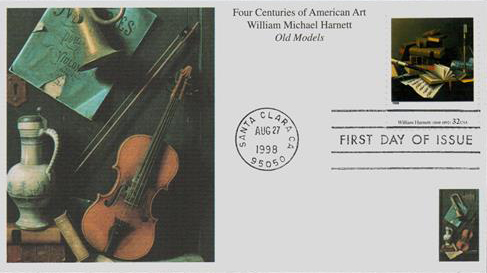
Harnett enjoyed significant commercial success in America, but his declining health would keep him from working months at a time. He suffered from rheumatism and kidney disease and sought relief in Arkansas’ Hot Springs and Wiesbaden, Germany. Though newspaper critics and some in the art community praised his work, he was never elected to the National Academy. Harnett died on October 29, 1892.
Issue Date: December 3, 1969
City: Boston, MA
Quantity: 145,788,800
Printed By: Bureau of Engraving and Printing
Printing Method: Lithographed, engraved
Perforations: 11
Color: Multicolored
This issue honors American artist William M. Harnett, whose paintings are so lifelike he was once charged with counterfeiting.
Birth Of William Harnett
Harnett was born during the potato famine in Ireland and his family moved to America shortly after his birth. His parents, a shoemaker and a seamstress, settled the family in Philadelphia, Pennsylvania.

Harnett attended Catholic schools as a boy and sold newspapers and worked as an errand boy to help support the family. As a teenager, Harnett was trained as an engraver. In 1866, he enrolled in night classes at the Pennsylvania Academy of Fine Arts. Harnett then moved to New York in 1869 where he worked in a silver engraving shop while attending The Cooper Union and later the National Academy of Design. During this time he briefly studied under portrait artist Thomas Jensen.
Around 1875, Harnett began producing oil paintings. He started to exhibit his work in New York and Philadelphia. By 1880, he sold enough paintings to go study abroad as was custom for artists. Harnett traveled to London before spending six months in Frankfort, three years in Munich, and a short stay in Paris. While overseas, he frequently sent his paintings back to America for exhibition and sale. Harnett returned to the United States in 1886 and lived in New York City until his death.

Harnett became known for his “trompe-l’œil still lifes” (French for “fool the eye” – images that were so realistic, they appeared to be in three-dimensions. His realism made him a leading still-life painter of the late 1800s. It was once said that Harnett “copied in oil with the accuracy of a camera.” Some of his favorite subjects were firearms, books, and musical instruments.

Money was also a favorite subject of Harnett’s. He was able to create a reproduction of a flat, crinkled bill that could easily deceive the eye. So easily that in 1886, the US Treasury confiscated a Harnett painting of a five-dollar bill from the wall of a New York tavern and attempted to arrest the artist for forgery. He managed to talk his way out of being imprisoned.

Harnett enjoyed significant commercial success in America, but his declining health would keep him from working months at a time. He suffered from rheumatism and kidney disease and sought relief in Arkansas’ Hot Springs and Wiesbaden, Germany. Though newspaper critics and some in the art community praised his work, he was never elected to the National Academy. Harnett died on October 29, 1892.






